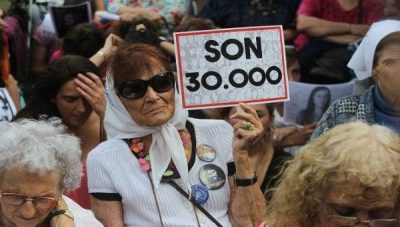The US Knew All About the 1976 Coup Plot in Argentina
"We would like you to succeed... friends should be supported. The sooner you succeed, the better," U.S. Secretary of State Henry Kissinger said.

All Global Research articles can be read in 27 languages by activating the “Translate Website” drop down menu on the top banner of our home page (Desktop version).
***
On the occasion of the 45th anniversary of the military coup in Argentina this Wednesday, documents declassified by the National Security Archive (NSA) indicate that the U.S. government was aware of the plots led by coup leader Jorge Videla in 1976.
Cables signed by the former U.S. Ambassador to Argentina Robert Hill showed early meetings with coup instigator Emilio Massera who was a member of the Military Board installed on March 24, 1976.
“The embassy has already indicated discreetly and through third parties to the Military that the U.S. will recognize a new government in Argentina,” Hill wrote.
The documents also proved that the then U.S. Undersecretary of State William Rogers briefed Secretary of State Henry Kissinger and the White House National Security Council (NSC) in mid-February about the destabilization plans.
“The military government will be friendly to the U.S; however, in stepping up the fight against the guerrillas, it is almost certain they will engage in human rights violations that would generate international criticism,” Rogers stressed.
24 de Marzo Día de la Memoria, Verdad y Justicia. Hoy abrazamos a todos los que siguen buscando su identidad robada, llorando sus desaparecidos y a un pueblo entero que fue víctima de la última dictadura civico militar en Argentina. Nunca Más. pic.twitter.com/8eBZgQTgSq
— Lucía Bonifatti (@LBonifatti) March 24, 2021
The meme reads, “March 24: Day of Memory, Truth, and Justice. We embrace all those people who continue to search for their stolen identities and mourn their disappeared relatives. We recall an entire nation that was a victim of the last civic-military dictatorship. Nevermore”
Central Intelligence Agency (CIA) officials accompanied by then-Republican Senator Jesse Helms visited Buenos Aires just 12 days before the coup. Cables showed Videla’s intentions to seek recommendations for handling “the public relations aspect.”
“My presence out of the country when the coup happens would, I think, be a fact in our favor indicating the non-involvement of the U.S. Embassy and the U.S. Government,” Hill warned.
The dictatorship lasted until 1983, left a toll of 30,000 disappeared people and almost 500 children with substituted identity. In 1979, a mission by the Inter-American Commission on Human Rights visited Argentina where it received 5,580 complaints of kidnappings, torture, and murder.
*
Note to readers: please click the share buttons above or below. Forward this article to your email lists. Crosspost on your blog site, internet forums. etc.
Featured image: The sign refers to the 30,000 people killed by the dictatorship, Buenos Aires, Argentina, 2017. | Photo: EFE

